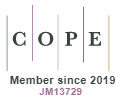Coherence Among Street Vendors Act and City Planning Policies Case Study- Patiala
DOI:
https://doi.org/10.15415/cs.2021.82006Keywords:
Coherence, Policy, Street vendors, Informal sectorAbstract
The magnitude of informal sector and its contribution to national economy indicates that 92% of total work force of 457 million in India, work in the informal sector. Informal sector contributes 60% to country’s GDP (Gross Domestic Product). This sector shares 98% of the total enterprises in the country. As per 2011 census, Patiala has 4.46 lakh urban population served by 22,000 formal units and 7,000 informal units. Out of these 7,000 informal units, about 2000 informal units fall in walled city. This paper is an attempt to review the coherence among the Street Vendors (Protection of Livelihood and Regulation of Street Vending) Act, 2014 and the City Planning Policies by studying the provisions made by the urban local bodies (ULB) to address the issues of informal sector under this Act and its integration with the city Master Plan before the enactment and after the enactment of the Vendors Act 2014. For better understanding the author has studied the historical evolution of informal trading activities in Patiala, its growth pattern, trend, spatial distribution, socio economic characteristics, space occupied, movement within informal and formal trade and its impacts on traffic, land use and physical environment. Salient features of The Protection of Livelihood and Regulation of Street Vending Act,
2014 have been discussed along with the practical application of the same by Municipal Corporation Patiala and its coherence with the city planning document.
Downloads
References
Available at https://www.epw.in/journal/2003/16/commentary/national-policy-street-vendors.html
2. Chakraborty, P., Koley, S. Socio-Economic View on Street Vendors: A Study of a Daily Market at Jamshedpur, Journal of Advanced Research in Humanities and Social Science 5(1) 14-20
Available at https://journals.indexcopernicus.com/api/file/viewByFileId/392334.pdf
3. Kapoor, R., Krishnapriya P.P.,(2019) Explaining the contractualisation of India’s workforce. ICRIER
Available at https://icrier.org/pdf/Working_Paper_369.pdf
4. Master Plan Patiala 2010-2031, Department of Housing and Urban Development, Punjab
Available at : https://www.puda.gov.in/?q=patiala-2009-2031-plan-amended
5. Naik, A.K. (2009) Measuring the Informal Economy in Developing Countries: Informal Sector and Informal Workers in India. IARIW-SAIM Conference Available at http://iariw.org/conferences/past-conferences
6. National Policy on Urban Street Vendor 2009, Ministry of Urban Employment and Poverty Alleviation, Government of India https://www.prsindia.org/sites/default/files/bill_files/bill82_2006123082_National_Policy_for_Urban_Street_Vendors.pdf
7. NSSO (2012) Informal Sector and Conditions of Employment in India Report No. 539 (66/10/2)
Available at http://mospi.nic.in/sites/default/files/publication_reports/nss_rep_539.pdf
8. Planning Commission, Government of India (2013) Twelfth Five Year Plan (2012-2017), Sage Publications
Available at http://niti.gov.in/planningcommission.gov.in/docs/plans/planrel/12thplan/pdf/12fyp_vol1.pdf
9. Sharma S.(2016), Hawking Space and National Policy on Urban Street Hawkers: A study of NDMC, Delhi, Procedia Technology 24: 1734–1741,
doi: 10.1016/j.protcy.2016.05.207
10. Singh, A K ( 2010) Inclusive Urban Development in India , Background Paper , RCUES, Lucknow
Available at http://rcueslucknow.org/publication/TrainingModules/Dr.A.K.Singh/InclusiveUrbanGrowth.pdf
11. The Punjab Street Vendors (Protection Of Livelihood And Regulation Of Street Vending) Rules, 2015 (Pb.)
Available at http://mohua.gov.in/upload/uploadfiles/files/13(1).pdf
12. The Punjab Street Vendors (Protection Of Livelihood And Regulation Of Street Vending) Scheme, 2016 (Pb.)
Available at http://lgpunjab.gov.in/upload/582473265ce38StreetVendorsScheme.pdf
13. The Street Vendors (Protection Of Livelihood And Regulation Of Street Vending) Act, 2014, published in the Gazette of India by Legislative Department, Ministry of Law and Justice on 5 March 2014, Available at http://www.egazette.nic.in/WriteReadData/2014/158427.pdf.
Downloads
Published
Issue
Section
License
Copyright (c) 2021 Ajay Kaushal

This work is licensed under a Creative Commons Attribution 4.0 International License.
Articles in the Journal of Creative Space (Creat. Sp.) by Chitkara University Publications are Open Access articles that are published with licensed under a Creative Commons Attribution- CC-BY 4.0 International License. Based on a work at https://cs.chitkara.edu.in. This license permits one to use, remix, tweak and reproduction in any medium, even commercially provided one give credit for the original creation.
View Legal Code of the above-mentioned license, https://creativecommons.org/licenses/by/4.0/legalcode
View Licence Deed here https://creativecommons.org/licenses/by/4.0/
 |
Journal of Creative Space by Chitkara University Publications is licensed under a Creative Commons Attribution 4.0 International License. Based on a work at https://cs.chitkara.edu.in/ |







